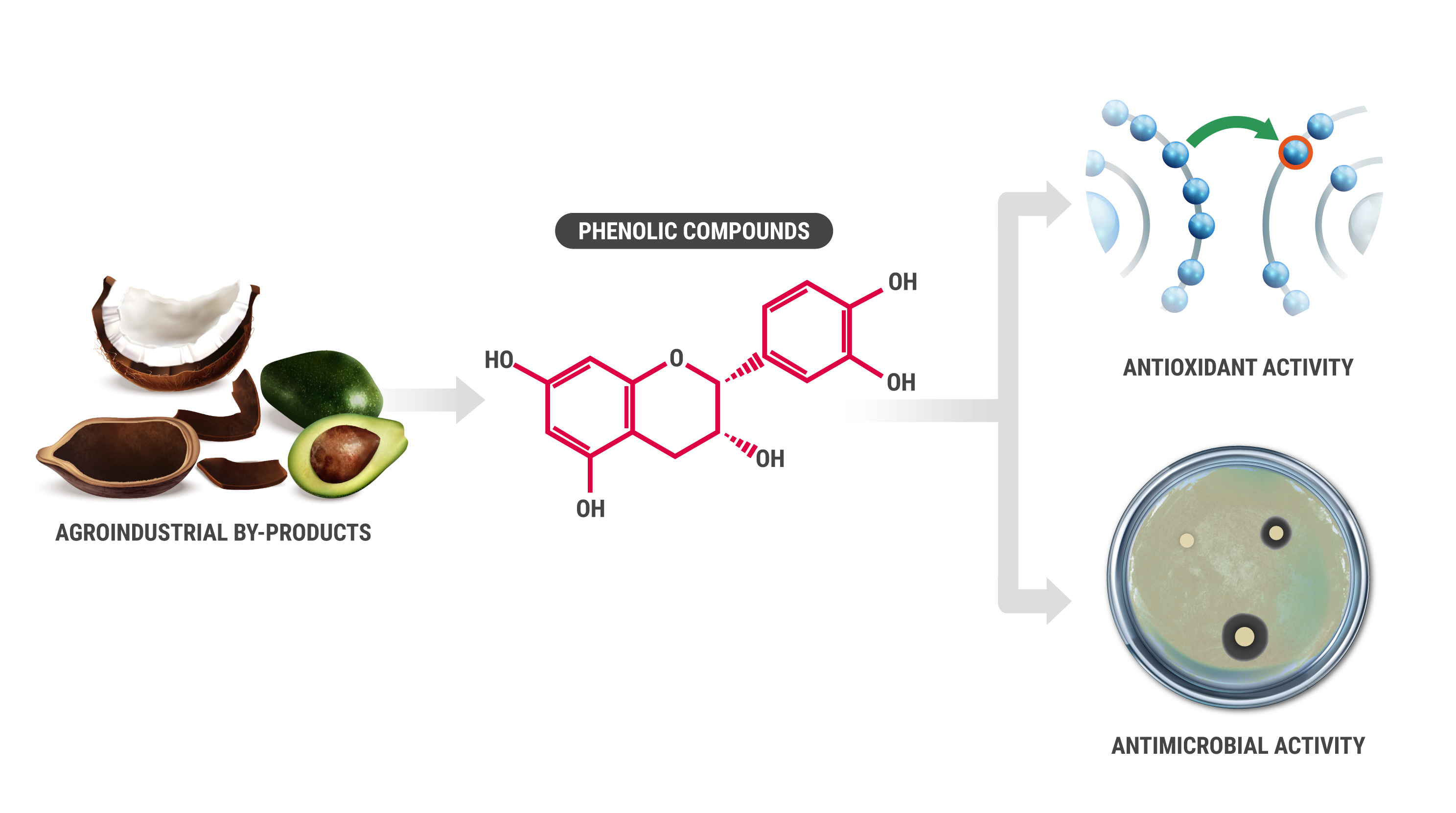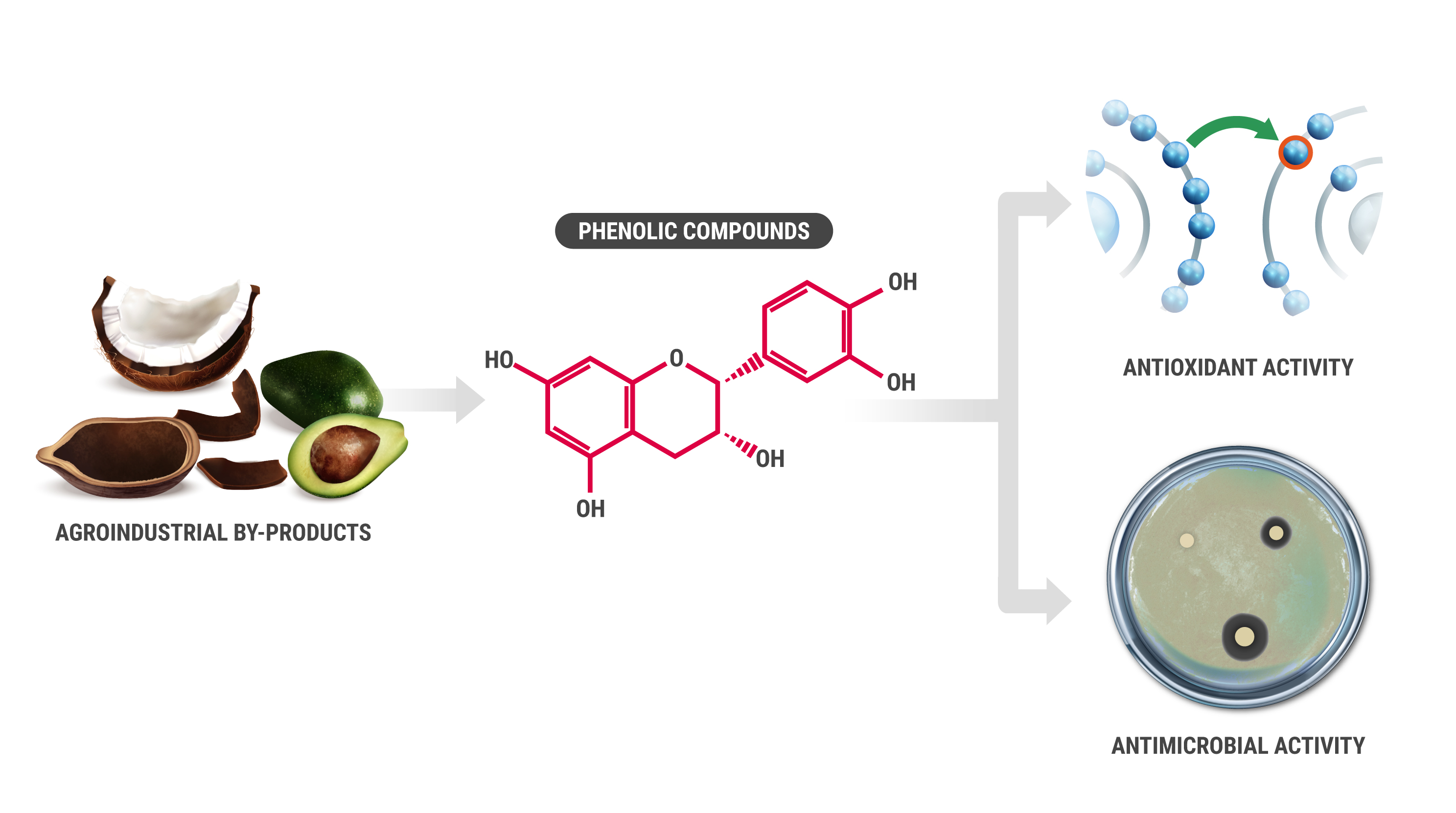Fruit peels as sources of bioactive compounds with antioxidant and antimicrobial properties
Keywords:
fruit peel, phenolic compound, antioxidant activity, antimicrobial activityAbstract

Recently, a major interest in searching for phytochemicals with nutritional and pharmaceutical purposes has arisen. In this regard, it is known that polyphenols present antioxidant properties as well as an inhibitory effect against some kinds of microorganisms. The aim of this study was to obtain aqueous-ethanolic extracts from peels of avocado, cocoa bean, coconut and cactus pear by ultrasound-assisted extraction. The extracts were characterized in terms of phenolics (Folin-Ciocalteu reagent), antioxidant potential (ferric reducing/antioxidant power assay), radical-scavenging ability (2,2-diphenyl-2-picrylhydrazyl free radical assay), and antimicrobial activity against Staphylococcus aureus, Shigella dysenteriae and Candida albicans (disk diffusion test). The results revealed that the avocado peel extract had the highest phenol content (36.5 mg EAG g-1 dry weight), the highest antioxidant activity (141.2 mME Trolox g-1 dry weight) and the lowest IC50 value (59 ppm). Furthermore, avocado and coconut peels demonstrated an inhibitory effect against the tested microorganisms.
Highlights
- Bioactive compounds from fruit by-products were obtained by ultrasound-assisted extraction.
- A positive correlation between phenolics and antioxidant activity was observed.
- Extracts with higher antioxidant activity were more active against the tested microorganisms.
- Fruit by-products could represent an important source of compounds with antioxidant and antimicrobial properties.
Downloads

Published
How to Cite
Issue
Section
License
Aquellos autores/as que tengan publicaciones con esta revista, aceptan las Políticas Editoriales.










.jpg)




